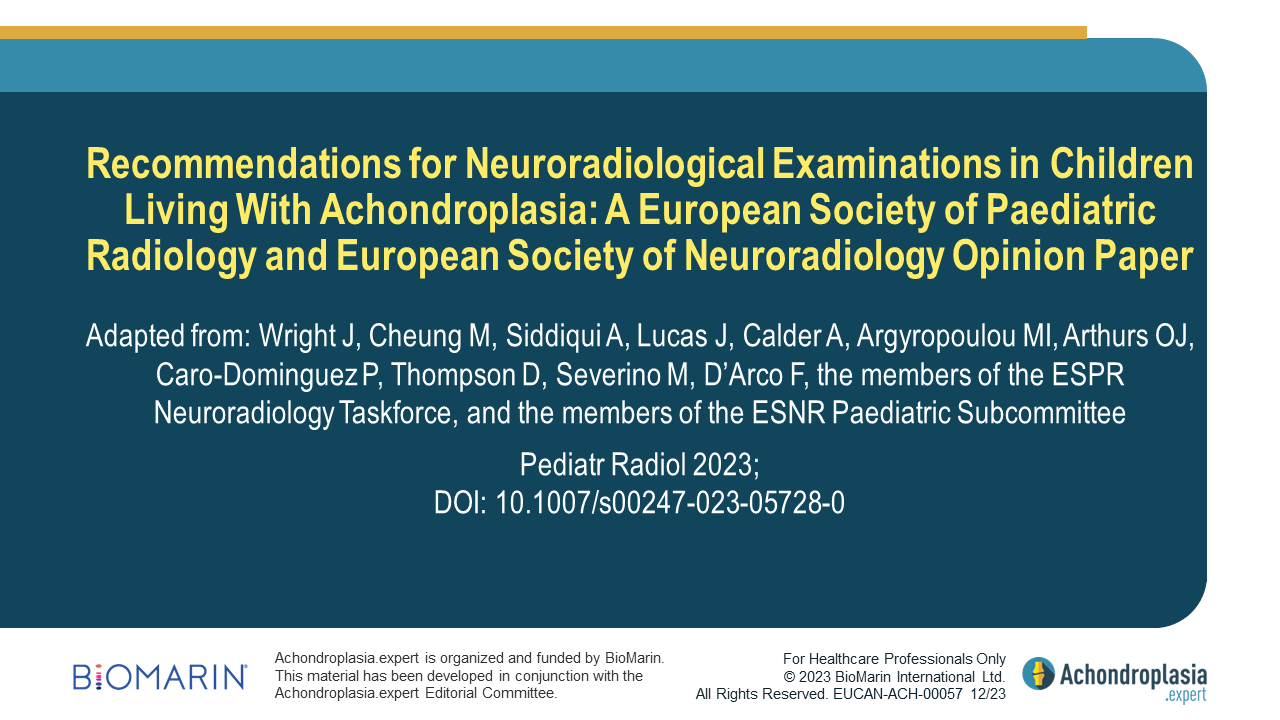Description
In this opinion paper, the European Society of Pediatric Radiology (ESPR) and European Society of Neuroradiology (ESNR) propose imaging protocols and follow-up for evaluating neuroanatomy in children with achondroplasia. A preference is given to magnetic resonance imaging (MRI), with caveats against the routine use of computed tomography (CT), conventional radiography, and vascular imaging. Emphasis has been placed on reducing scan times, and avoiding unnecessary radiation exposure.
Children living with achondroplasia are at an increased risk of developing neurological complications, which may be associated with acute and life-altering events. As such, timely and effective neuroimaging is essential to help guide management. Although guidelines for clinical management have recently been established, specific guidelines around neuroradiological examination have been missing. These new recommendations are based on available literature, supplemented by best-practice opinion from radiologists and clinicians.
The paper states that dedicated vascular imaging or conventional radiography are not needed in most cases. CT is also not routinely recommended, and should be used only be used for pre-operative planning and assessment of post-operative results. However, MRI of the brain and craniovertebral junction should be performed at diagnosis and in the event of new neurological symptoms.

References:
Wright J, Cheung M, Siddiqui A, Lucas J, Calder A, Argyropoulou MI, Arthurs OJ, Caro‑Dominguez P, Thompson D, Severino M, D’Arco F, the members of the ESPR Neuroradiology Taskforce, and the members of the ESNR Pediatric Subcommittee
Pediatr Radiol 2023; DOI: 10.1007/s00247-023-05728-0
